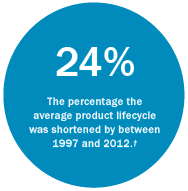HPC Cluster Help is at Hand
Latest News
March 29, 2015

 High-performance computer clusters have proven to be a perfect solution for many design engineering teams tasked with running more advanced computer-aided engineering (CAE) simulations in less time. As products increase in complexity, simulations are following suit. The large model sizes and multidisciplinary workloads can be too demanding for existing hardware, including those high-performance workstations specifically calibrated for engineering software.
High-performance computer clusters have proven to be a perfect solution for many design engineering teams tasked with running more advanced computer-aided engineering (CAE) simulations in less time. As products increase in complexity, simulations are following suit. The large model sizes and multidisciplinary workloads can be too demanding for existing hardware, including those high-performance workstations specifically calibrated for engineering software.
Clusters are well positioned to drive HPC horsepower downstream, but there are still deployment challenges that the average small- to mid-size shop can’t handle without assistance. For example, proper configuration of an HPC cluster entails far more than choosing the right processor and core count or specifying enough memory. On the hardware front alone, there are many decisions to be made, from weighing the benefits of a CPU-centric architecture to building out a system that has a greater reliance on GPU technology and memory, just to name a few.
 Beyond the hardware, there are considerations around network computing and storage resources in addition to what kind of communications bus can best support the target CAE applications and workloads. Additionally, there are requirements specific to HPC environments—for example, the proper configuration and on-going management of the job scheduling software along with workload management applications that ensure the environment runs at peak performance.
Beyond the hardware, there are considerations around network computing and storage resources in addition to what kind of communications bus can best support the target CAE applications and workloads. Additionally, there are requirements specific to HPC environments—for example, the proper configuration and on-going management of the job scheduling software along with workload management applications that ensure the environment runs at peak performance.
HPC clusters provide an obvious path to more powerful simulation studies, but not every company has the internal know-how to benefit from that journey without an expert guide. Specially trained value-added resellers, working in partnership with key HPC providers like HP and CAE software specialists, can deliver a fully integrated solution in conjunction with support services that reduce HPC complexity and allow engineers to focus on what they do best: innovating great products.
Get the Full Story
Download the complimentary report, “Partnerships Remove Complexity from Clusters,” sponsored by HP and Intel, and produced by Desktop Engineering, for more information on how value-added resellers can help you deploy high-performance computing clusters.
† Source: “Mastering Product Complexity,” Roland Berger strategy consultants.
Subscribe to our FREE magazine, FREE email newsletters or both!
Latest News





